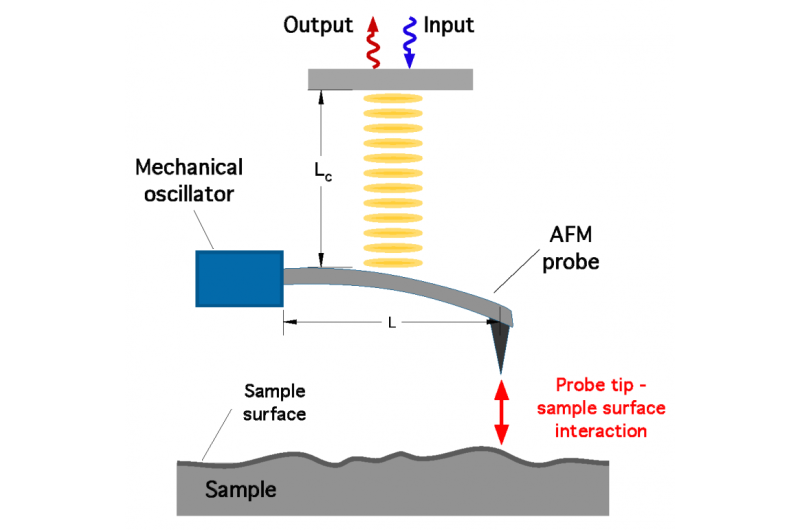'Quantum mechanical squeezing' enables quantum state atomic force microscopy

By taking advantage of a phenomenon known as "quantum mechanical squeezing," researchers have conceptually designed a new method of applying atomic force microscopy. Ali Passian of Oak Ridge National Laboratory and George Siopsis of the University of Tennessee introduced a novel method of making measurements in a paper published in Physical Review A.
The technique, which they named quantum atomic force microscopy, has the potential to significantly increase the resolution of AFM. The method takes advantage of the fine interactions between the probe of the microscope and the surface of the sample to find the "sweet spot" where quantum effects stabilize the probe, resulting in more sensitive measurements.
"That's the theoretical prediction of this effect," Passian said. "Of course, the experiments will have the final say on how much better we can do, but the basic concept and theory are viable."
More information: Ali Passian et al. Quantum state atomic force microscopy, Physical Review A (2017). DOI: 10.1103/PhysRevA.95.043812
Journal information: Physical Review A
Provided by Oak Ridge National Laboratory





















